Types of Lampshades: A Complete Guide
Find the right style for your space.
From front hall consoles to bookshelf ledges and kitchen counters—there isn't a spot in the home that wouldn't benefit from a soft glow of light. Aside from a lamp's functional properties, it can make for a lovely decorative accessory that adds texture and cheerful color to any space. But as you search for lamps, the options can feel endless. To narrow down your selections, you can sharpen up your lamp and lampshade literacy—this will ensure you find the best style and fit for you.
To start, a lamp has a base and a shade. The harp is what holds your lampshade above your bulb. Many lampshades come with a spider fitting, which is secured to the harp by a finial (the screw-on topper). Finials can be as basic as a brass sphere or as ultra-funky as a pineapple.
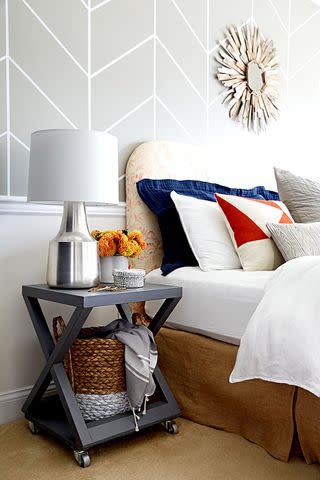
If you have a solid lamp base, you can refresh your lamp's "outfit" by changing its shade and topping it off with a piece of jewelry (the finial). Ahead, we'll explain the various types of lampshades, including shape, and material to help you shop for the perfect fixture.
Related: The 13 Best Floor Lamps That Are Stylish and Practical
Types of Lampshade Shapes
There are several different types of lampshades depending on your style and space.

Empire
One of the most standard shapes you'll see, an empire lampshade has a tapered design that allows light to travel in a downward direction through a wider brim. Its directional slope (which can vary depending on its size design like gallery or Pembroke empire shades) makes for a simplistic feel that meshes well with any style.
Best for: Classic, traditional settings.
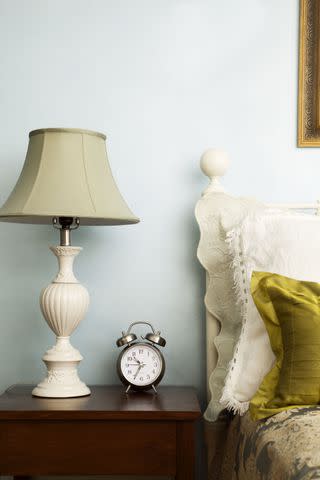
Cavan Images / Getty Images
Bell
The bell lampshade also features a wide brim like the empire but has distinct curved sides that form an elegant skirt-shaped appearance. Due to its shape, most of a bell lampshade's light emits from its bottom (making it an ideal source of ambient lighting).
Best for: Classic, traditional spaces.

Hexagonal or Pagoda
At a glance, hexagonal and pagoda lampshades may look similar. But, if you observe them side-by-side, you'll notice the bottom of a hexagonal lampshade forms a true hexagon. Pagoda lampshades, on the other hand, vary slightly in design and feature a brim that does not form a clear-cut geometric shape. Instead, thanks to its tower shape (that resembles a pagoda building), pagoda lampshades do yield a traditional style.
Best for: Classic, traditional aesthetics.

Dome
With a nod to retro forms, dome shapes cast their light downwards. You'll often see this iteration constructed of metal or glass. This lampshade style provides a nice decorative element to modern spaces.
Best for: Spaces that need directional light over a specific area and industrial and midcentury modern or modern aesthetics.
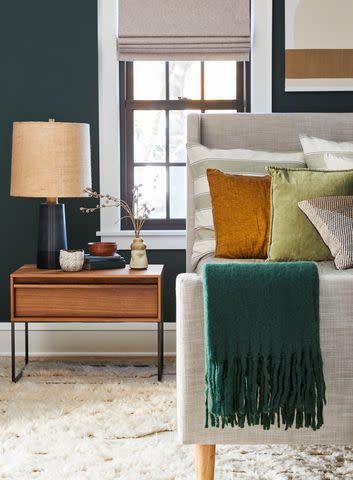
Drum/Cylindrical
This sleek shade features a wide cylindrical shape flanked by tall sides. Since this shade's top and bottom have equal-sized rims, it shines a uniform amount of light in both upward and downward directions.
Best for: Any design style.
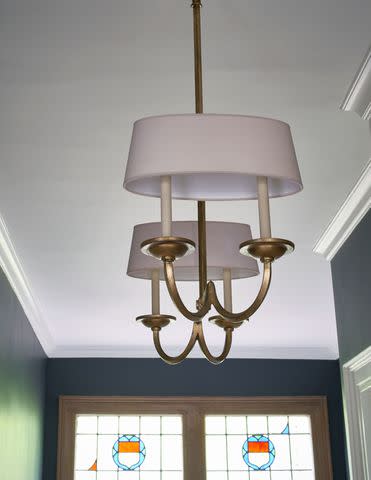
Dustin Peck Photography
Oval
Oval lampshades feature a narrow depth and are ovular in shape.
Best for: Smaller spaces or narrow pieces of furniture.
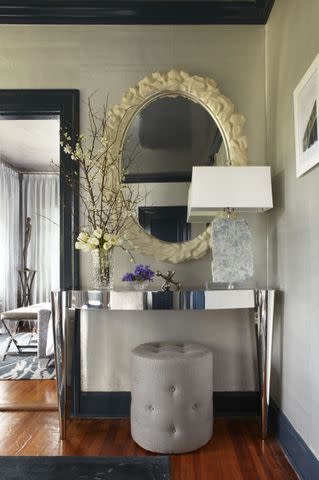
Brantley Photography
Square and Rectangular
Rectangular and square shades have structured, geometric appearances. While rectangular shades have two longer sides, square shades share equal dimensions on every side.
Best for: Modern spaces and lamp bases. Rectangular lampshades can work great on narrow pieces of furniture as well.
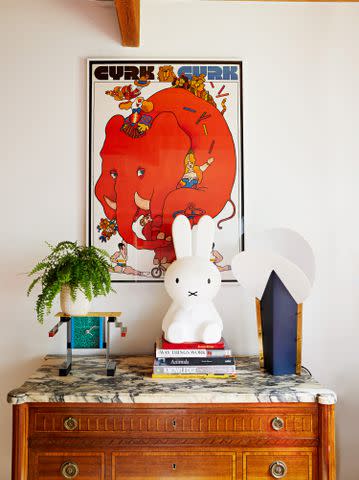
Melanie Acevedo
Novelty
Representing one of the most eye-catching categories, novelty shades can range from the slightly eccentric to quirky. Here, some lamps may forego the shade altogether featuring life-size horses, monkeys, and rats holding a bulb!
Best for: Statement pieces and casual or kid-friendly spaces.
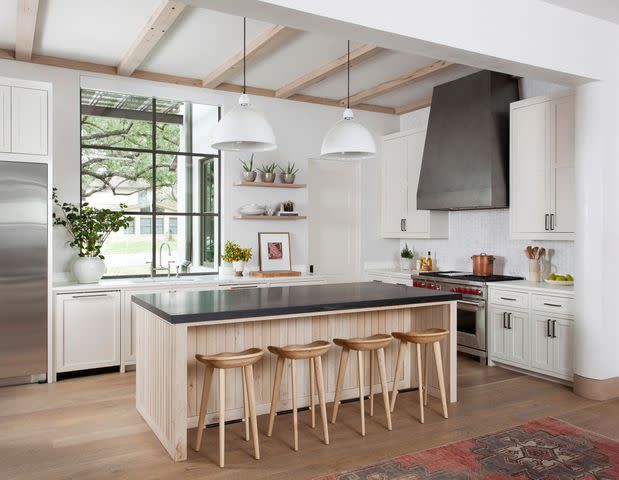
Ryann Ford
Bowl
With a wide basin, bowl shades distribute their light downwards and look very similar to a bowl.
Best for: Traditional aesthetics.
Tips
Editor's Tip: You don't want any gangly proportions! To prevent this, ensure your lampshade is:
About twice the diameter of your lamp base.
About two-thirds of the total height of your lamp base height.
For example, if your lamp base is 8 inches wide and 30 inches tall. Then, your shade should be at least 16 inches in diameter and at least 20 inches in height. Proportion is key. If you pair a tall lamp with a short shade, it may look wonky or vice versa, a very tall shade on a small lamp will cause its top to look heavy. Picking the right size also means ensuring that your harp doesn't peek through.
Common Lampshade Materials
Paper: Paper shades can be a more budget-friendly option when compared to fabric shades. They're also lightweight and cast a more translucent glow. White paper shades produce a cooler light and more modern feel while parchment-colored paper shades produce a warmer light.
Fabric: Fabric shades create beautiful illumination that can be tailored to your taste (which means you can pick any textile). You can also choose from pleated or shirred versions and shades lined with bold-colored trims. Fabrics make a versatile choice because you can pick from a decorative pattern that can give dimension to any room (even when the lamp isn't on). Some of the most common lampshade fabrics include silk, linen, burlap (grown from sisal, jute, or hemp fibers), and cotton. And sometimes rawhide as well.
Metal: Metal lampshades do not let any light pass through its sides, and only glow light in one direction, making them an excellent choice for task work like drawing, writing, or reading. Some metal shades have holes or shape cutouts to cast a design as they glows.
Glass or Acrylic: From stained glass, to clear glass and colored glass or just see-through acrylic, you'll find quite a few glass lampshades on the market!
Rattan, Wicker, or Seagrass: Rattan, wicker, and seagrass-like textures bring in a warm, global feel. Each may also differ in their weave. For example, rattan can come in an eyelet or basket weave. Adding on to this eco category, you can also find raw wood and bamboo shades.
Lampshade Opacity
The more opaque lampshade you pick, the less light it will illuminate, which isn't necessarily a terrible decision! It just depends on how you'd like your lamp to function for you.
There are semi-opaque and fully-opaque lampshades. For example, you may see a black shade with a gold lining, which still allows some light to travel up and down. This is considered a semi-opaque shade. An example of a fully-opaque lampshade is metal where no light passes through its sides (ideal choice for task lighting).
In general, shades can come in various colors from red to black and orange, but colored shades are not ideal for spaces that require heavy illumination. This is because the shade will absorb a majority of the lumens produced by your bulb (and only direct light up and down). But, what opaque shades lack in light, they compensate in mood—providing ambient lighting (which gives spaces that homey and cozy feel we all love).
Quick Tips for Choosing a Lampshade
Square or geometric bases work best with square shades.
Empire and drum shades are the safest, most versatile design choices.
Only pick pleated lampshades if you want a traditional aesthetic.
Ensure your lamp shade covers your harp, lamp neck, harp, and all hardware.
When in doubt, take your base with you as you shade shop! It helps to visualize both together (instead of winging it).
Want to make a statement or just have some fun? Search for barrel or novelty shapes.
Always research how to care for your lamp base + lampshade material before trying anything! Care instructions will vary depending on your material.
For more Better Homes & Gardens news, make sure to sign up for our newsletter!
Read the original article on Better Homes & Gardens.
